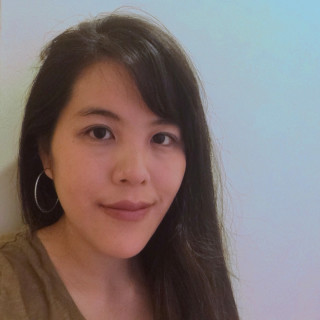
A number of years ago, when I lived on the rural eastern shore of Maryland, I bought an old yellow Schwinn from a man in dirt-covered cargo shorts who told me that the bike had once been used on a movie set. I liked the idea of having a bike already full of stories and adventures, as opposed to one who had, up until then, only lived as metallic parts in a cardboard box somewhere in an Amazon warehouse.
Mostly, I loved that the bike was yellow, a color that I had grown up equating with sunshine, life, joy and hope. I spent my evenings and weekends riding my yellow Schwinn alongside waddling ducks and honking geese, flanked by fields of soy and wheat. I was convinced that the yellow paint made me ride that much faster, that much smoother, and it made everything in that isolated landscape a whisper brighter, a touch warmer.
Yellow and I, we’ve always gotten along. We’ve always had a good relationship.
But, Aiden is very yellow.
I first meet Aiden a couple weeks before Christmas while serving as the NP for our infectious diseases service. As with all my new consult patients, I piece together his medical story from chart review before walking into the room. With my eyes on the computer screen, my hand on the mouse, I learned of his afflictions: Stage 4 Neuroblastoma with lung metastases; status post surgical resection and extensive chemotherapy; an autologous stem cell transplant just about a month prior. He is in the ICU now with severe veno-occlusive disease and multi-organ failure, intubated and on CVVH.
He’s also only three years-old — that magnificent age of peak curiosity and magical thinking when anything and everything is worth exploring, and the world is simply one never-ending adventure. However, Aiden is instead sedated on a vent and on dialysis in the ICU. He is a swollen, bright yellow.
Over the course of the next few weeks, Aiden gets a little better. Slowly, he is able to breathe on his own and is weaned off the vent. He starts making his own urine and is taken off the circuit. Eventually, his bilirubin starts downtrending and he even starts to look a little more pink. He makes it out of the ICU and is transferred back up to the Bone Marrow Transplant floor — and, as a consult service, our team signs off of his case.
I meet Aiden again a couple of months later. This time, it is just a few days before Valentine’s Day, one of my favorite holidays at the Children’s Hospital. He has been having persistent fevers and diffuse edema — all of unclear etiology—and our team is asked to help identify a possible infectious etiology and to determine what antimicrobial agents to use.
When I walk into his room (masked, gowned and gloved), Aiden peers at me with sunken yellowed eyes. His tummy carries an extra two liters of fluid.
There, Yellow stares at me in adamant defiance of everything I associate with it.
Yellow had always signified joy and hope, optimism and delight. Yellow was dancing in the kitchen with girlfriends, laughing with siblings over old memories, walking my dog down the hill to the park. Yellow meant the start of spring, laying on grassy lawns, feeling the caress of friendly sunshine on my skin. Yellow used to mean exploring life on my yellow Schwinn, feeling nothing but an assurance that all would be right in the world.
This time, though, Yellow is heavy and dark, flat and lacking in luster and brilliance, as if merely a dusty vial sitting on the top back shelf of a bathroom medicine cabinet. It sounds like a tired whimper and an acquiescent moan and smells like the back room of a forgotten antique store. This time, instead of being light and whispy, Yellow is thick with the viscosity of tar, and it sits there like a smirking piece of stubbornness with arms crossed and nose arrogantly pointed in the air, silently and smugly daring me to reconsider just how well I actually know it.
On the wall across from where Aiden sits in his bed, near the door into the room, I notice glossy, brilliant photos of a smiling family. Before cancer. Before surgery and chemo. Before relapse. Before stem cell transplant.
Before now.
I wonder if Aiden recognizes himself in those photos, if he has seen himself in the mirror. Does he know that he is the smiling blue-eyed boy wearing the wool beret and baby Gap button-down shirt, who now lays in bed with a protuberant belly tense with serpentine purple-blue vessels? Does he ask Dad who daily sits at bedside with unbelievable composure, Daddy, why am I so yellow? Does he ask Grandma who patiently feeds him spoonfuls of applesauce (and love), Grandma, why is my tummy like a water balloon? What does Aiden think when, from inside his isolation room, he spies children connected to IV poles riding in red wagons out in the hallways?
I see Aiden every day for a couple more weeks. And, every day, he lays there — a three year old boy, more silent, more sick, and slowly being swallowed up by Yellow.
I came into the hospital one morning to find out that Aiden was having some trouble breathing on the oxygen he was already on. Before he was able to get his stat repeat chest CT, perhaps while I was walking up the stairs from the fourth to fifth floor or while I was on the phone with one of the residents, Yellow got swallowed up by Blue. Then, he was swallowed up by Grey.
Cause of death: Cardiopulmonary arrest with VOD and stage 4 NB as contributing condition.
Aiden's room was empty by the evening — the family photos taken off the walls, his toys and stuffed animals placed in a bag. Yet Yellow’s cackles and sneers of derision seemed to fester and stay, creating a putrid wasteland in my mind. And, for many long months after, I came to resent all things bright — and all things Yellow.
Evelyn Lai is a pediatric nurse practitioner and 2018–2019 Doximity Author.
Note from the Editor: Names have been changed for privacy.







